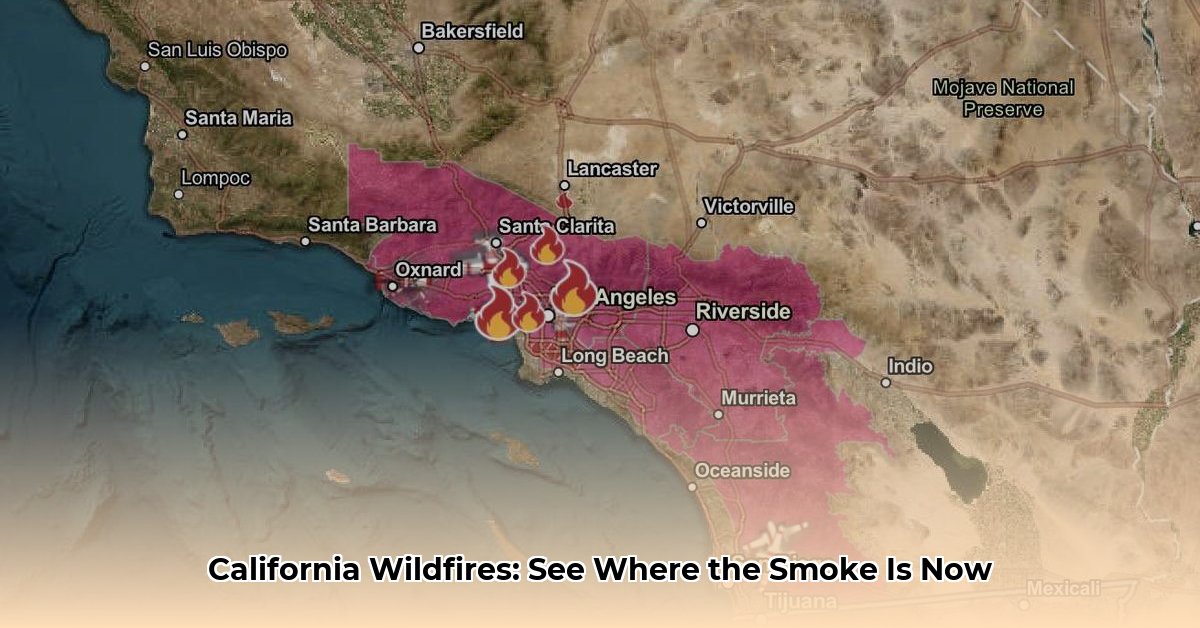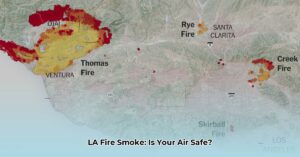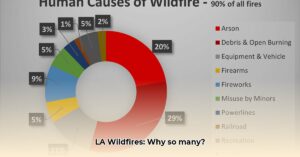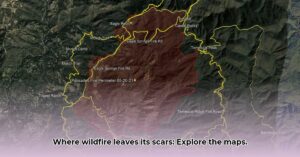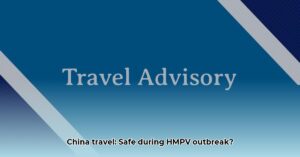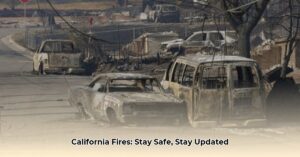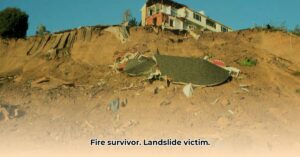Staying informed about wildfire smoke is crucial for protecting your health during California’s fire season. This comprehensive guide provides everything you need to know about using real-time smoke maps, understanding air quality information, and taking proactive steps to stay safe.
Understanding Wildfire Smoke and its Impacts
Wildfires generate vast plumes of smoke that can travel extensive distances, affecting air quality far beyond the fire’s immediate vicinity. This smoke contains a mixture of gases and fine particles, notably PM2.5, which are small enough to penetrate deep into the lungs and even enter the bloodstream. Exposure to wildfire smoke can lead to a range of health issues, from eye and throat irritation to more serious respiratory and cardiovascular problems. Understanding the risks and taking preventive measures is essential for protecting yourself and your family.
Using Real-Time Smoke Maps: Your Guide to Cleaner Air
Real-time smoke maps are essential tools for visualizing the spread and density of wildfire smoke. They combine data from satellites, ground monitors, and fire reports to create an up-to-the-minute picture of air quality conditions. These maps are dynamic, changing as fire and weather conditions evolve.
Navigating the AirNow Fire and Smoke Map
The AirNow Fire and Smoke Map (fire.airnow.gov) is a widely recognized and reliable source for real-time smoke information. This interactive map uses a color-coded system based on the Air Quality Index (AQI) to display air quality levels.
Decoding the AQI: What the Numbers Mean
The AQI is a standardized measure of air pollution. Higher AQI values signify poorer air quality and greater health risks. The table below outlines AQI categories, potential health impacts, and recommended actions:
| AQI Range | Air Quality Category | Potential Health Impacts | Recommended Actions |
|---|---|---|---|
| 0-50 | Good | Air quality is considered satisfactory, and air pollution poses little or no risk. | Enjoy your usual outdoor activities. |
| 51-100 | Moderate | Air quality is acceptable; however, for some pollutants there may be a moderate health concern for a very small number of people who are unusually sensitive to air pollution. | Sensitive individuals may consider reducing prolonged or heavy exertion outdoors. |
| 101-150 | Unhealthy for Sensitive Groups | Members of sensitive groups may experience health effects. The general public is not likely to be affected. | Active children and adults, and people with respiratory disease, such as asthma, should limit prolonged outdoor exertion. |
| 151-200 | Unhealthy | Everyone may begin to experience health effects; members of sensitive groups may experience more serious health effects. | Limit prolonged or heavy exertion outdoors. |
| 201-300 | Very Unhealthy | Health warnings of emergency conditions. The entire population is more likely to be affected. | Avoid all outdoor physical activity. |
| 301-500 | Hazardous | Health alert: everyone may experience more serious health effects. | Everyone should avoid all outdoor exertion. |
Other Useful Resources:
- Cal Fire: (www.fire.ca.gov) Provides up-to-date information on active wildfires, including location, size, and containment status.
- InciWeb: (inciweb.nwcg.gov) Offers information on wildfire incidents nationwide.
- Local Air Quality Management Districts: Check your local district’s website for region-specific alerts and advisories.
Protecting Your Health: Actionable Steps for Smoky Days
Monitoring the smoke map is just the first step. Taking proactive measures to minimize smoke exposure is critical for protecting your health, especially when the AQI is elevated.
At Home:
- Seal Your Home: Close windows and doors to keep smoke out. Use weather stripping or caulk to seal any gaps.
- Use Air Conditioning: Set your AC to recirculate mode to avoid drawing in outside air.
- Run an Air Purifier: A HEPA filter air purifier can significantly reduce indoor smoke particles. Consider placing one in each bedroom.
- Avoid Indoor Smoke Sources: Refrain from burning candles, using fireplaces, or smoking indoors.
When Outdoors:
- Limit Outdoor Time: Minimize exposure, especially during peak smoke hours.
- Choose Less Strenuous Activities: If you must go outside, opt for low-impact activities.
- Wear a Proper Mask: An N95 mask, worn correctly, can filter out fine smoke particles. Cloth masks are not effective against wildfire smoke.
Monitoring Your Health:
- Listen to Your Body: Be aware of symptoms like coughing, shortness of breath, or eye irritation.
- Check the AQI Regularly: Stay informed about changing air quality conditions.
- Seek Medical Attention: If you experience severe symptoms, contact a healthcare professional immediately.
Evacuations and Emergency Preparedness: Staying Safe
Wildfire situations can escalate rapidly. Being prepared for a potential evacuation is vital.
Understanding Evacuation Orders:
- Evacuation Warnings: Indicate potential need to evacuate. Be ready to leave.
- Evacuation Orders: Mandate immediate evacuation from the area.
Planning Ahead:
- Sign Up for Alerts: Register for your community’s emergency alert system.
- Create an Evacuation Plan: Establish a designated meeting place and evacuation routes.
- Pack an Emergency Kit: Include essentials like medications, important documents, and a first-aid kit.
Staying Informed and Adapting to Changing Conditions
Wildfire conditions can change quickly. Staying informed is your best defense. Regularly check official resources like Cal Fire, AirNow, and your local news for updates on fire activity, air quality, and evacuation orders. Be adaptable and prepared to adjust your plans based on the evolving situation.
The Future of Wildfire Smoke Tracking and Research
Ongoing research focuses on improving wildfire prediction models and understanding the long-term health consequences of smoke exposure. The tools and information available are continuously evolving. While the information presented here represents current understanding, it is important to acknowledge the complexities and uncertainties inherent in wildfire behavior and smoke impacts.
By understanding how to use real-time smoke maps and air quality information, you empower yourself to make informed decisions to protect your health during California’s wildfire season. Remember, preparedness and vigilance are your greatest allies.

